eyed brown
(Lethe eurydice)
Conservation • Description • Habitat • Ecology • Distribution • Taxonomy
|
|
|||||||||||||
Description |
Eyed brown is an medium-sized, uncommon, brushfoot butterfly. It has a 1½″ to 2 7 ⁄16″ wingspan and is found in open, sunny, wet areas. The upperside of both wings are mostly medium brown with two thin, dark brown, marginal lines, and a light brown fringe on the outer margin. As the butterfly ages the wings become paler. The upperside of the forewing has a dark brown, jagged, postmedian line and an irregular, light brown, submarginal band. There is a straight row of black submarginal eyespots. The eyespots are somewhat blurry, are of nearly equal intensity, and increase in size from top to bottom. They do not have white centers (pupils). Each eyespot is surrounded by a pale ring, though this may not be noticeable in some individuals. The hindwing is slightly scalloped. The upperside of the hindwing has a curved row of five submarginal eyespots, and a single postmedian eyespot near the inner margin. Two of the lower submarginal eyespots have a white pupil. The innermost spot, near the anal angle, is reduced in size to a black dot. It is rare to see more than three or four of the eyespots from above when the butterfly is perched. The underside of the forewing is light brown with two dark brown, jagged, horizontal lines crossing the wing horizontally and a blackish-brown line at the end of the forewing cell. There is a straight row of four yellow eyespots with sharply defined black centers and white pupils. Each eyespot is surrounded by a dark ring that touches the dark ring of the adjacent eyespots. A pale ring surrounds the row of eyespots. The underside of the hindwing is light brown with two dark brown, jagged, horizontal lines crossing the wing horizontally and a blackish-brown line at the end of the hindwing cell. The innermost (basal) line is mostly straight but deeply indented, forming a noticable, inwardly-directed “tooth” between the second and third veins. The outermost line is jagged and forms a shallow “M” shape. There is a curved row of five yellow submarginal eyespots, and a single yellow postmedian eyespot near the inner margin. The submarginal eyespots are well separated and do not touch adjacent eyespots. Each eyespot has a sharply defined black center with a white pupil and is surrounded by a dark ring and a pale ring. The lowest one (nearest to the body) is a double eyespot, with two small black spots and two white pupils. The antenna and club are striped black and white. The antenna club has an orange tip. In southern Minnesota (Freeborn, Faribault, and Watonwan counties) there is a dark variant called smokey eyed brown (Lethe eurydice fumosa). They are noticeably darker: seen from above the forewing has five eyespots instead of four; seen from below it has six eyespots instead of five. The Nature Conservancy gives this variant a Global Rank of 3, “vulnerable to extirpation or extinction, 21–100 known occurrences.” |
Size |
1½″ to 2 7 ⁄16″ wingspan |
Similar Species |
A light outer ring around each eyespot helps to distinguish this satyr from the northern pearly-eye (Lethe anthedon) and little wood-satyr (Megisto cymela). Appalachian brown (Lethe appalachia) has forewing eyespots of unequal intensity. The underside of the hindwing has a straight basal line with no indentation between the second and third veins. It is found in moist woodlands near wetlands. |
Habitat |
Wet meadows, cattail marshes, slow moving streams, ditches. |
Ecology |
Season |
One brood: late June to mid-August. |
Behavior |
Adults make short flights over and within low plant growth. Though shy, they perch frequently, making it a relatively easy subject to photograph and identify. |
Life Cycle |
The male patrols in search of females, occasionally perching and waiting for a female to pass by. After mating, the female scatters eggs on plants near a host plant. When the eggs hatch the larvae must crawl to the host plant. Larvae overwinter as third or fourth stage instars. |
Larva Hosts |
Leaves of sedges (Carex spp.), mostly tussock sedge (Carex stricta), but also brome-like sedge (Carex bromoides), lake sedge (Carex lacustris), hop sedge (Carex lupulina), hairy-fruit sedge (Carex trichocarpa), and other broad-leaved sedges. |
Adult Food |
Mostly sap and bird droppings, but occasionally flower nectar. |
Distribution |
||
|
Sources 7, 21, 27, 29, 30, 71, 75, 82, 83. Biodiversity occurrence data published by: Minnesota Biodiversity Atlas (accessed through the Minnesota Biodiversity Atlas Portal, bellatlas.umn.edu, 7/11/2025). |
|
| 7/11/2025 | ||
Occurrence |
||
|
||
Taxonomy |
|
Order |
|
Superfamily |
Papilionoidea (Butterflies) |
Family |
|
Subfamily |
Satyriinae (satyrs, morphos, and allies) |
Tribe |
Satyrini (alpines, arctics, nymphs, and satyrs) |
Subtribe |
Lethina |
Genus |
Lethe (pearly eyes and allies) |
Subgenus |
Satyrodes |
Subordinate Taxa |
|
eyed brown (Lethe eurydice eurydice) smokey eyed brown (Lethe eurydice fumosus) |
|
Synonyms |
|
Lethe boisduvalii Lethe boweri Lethe canthus Lethe transmontana Papilio canthus Papilio eurydice Satyrodes eurydice Satyrodes rawsoni |
|
Common Names |
|
eyed brown |
|
Visitor Photos |
||
Share your photo of this insect. |
||
This button not working for you? |
||
|
||
|
||
MinnesotaSeasons.com Photos |
||
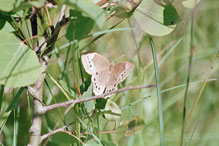 |
||
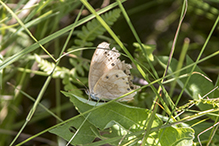 |
 |
|
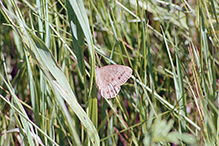 |
 |

Slideshows |
Eyed Brown (Satyrodes eurydice) |
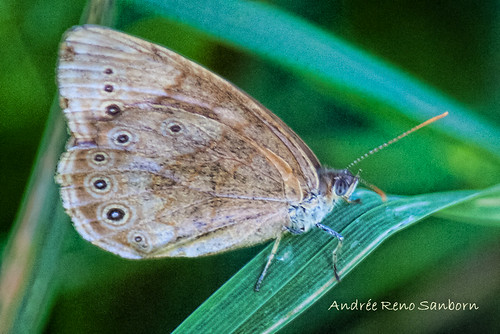
|
Satyrodes eurydice (Eyed Brown) |
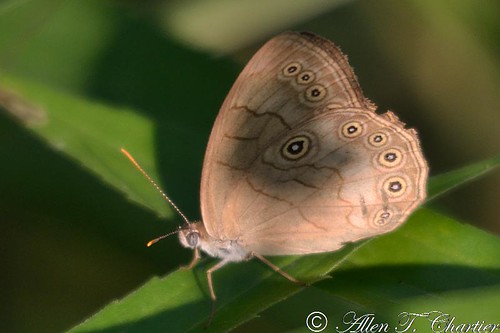
|

Visitor Videos |
||
Share your video of this insect. |
||
This button not working for you? |
||
|
Other Videos |
||
Eyed Brown (Nymphalidae: Lethe eurydice) on Leaf |
About
Uploaded on Jul 22, 2010 Photographed at the Rydell NWR, Minnesota (21 July 2010). Thank you to Bill Reynolds (@Bugguide.net) for identifying this specimen! |

Visitor Sightings |
||
Report a sighting of this insect. |
||
This button not working for you? |
||
|
|
MinnesotaSeasons.com Sightings |
||

Created: 7/23/2006 Last Updated: © MinnesotaSeasons.com. All rights reserved. |
